
What’s scarier for Canadian communities — floods, or flood maps?
When maps showing areas most likely to flood are outdated, it puts people and property...
This was supposed to be the week when the federal government made a decision on a massive new oilsands mine — one that, no matter the outcome, was sure to aggrandize a roiling, existential debate over the future of the oilsands themselves.
There has been no shortage of headlines swirling around Alberta’s oilsands and the fate of the Frontier mine: Some warned that approval would “kill [Canada’s] emissions targets.”
Others, like Alberta Premier Jason Kenney, said a rejection meant Canada is aiming to “phase out” the oilsands.
On Feb. 23, with just a few days until the decision deadline, Teck Resources, one of Canada’s largest mining companies, pulled out.
It was an unexpected move, even though Teck itself had long raised doubts about whether the Frontier project would ever be built, approval or not — particularly as it relied on oil prices that are much higher than current market reality.
In a letter to Jonathan Wilkinson, Canada’s minister of environment and climate change, Teck’s CEO Donald Lindsay offered myriad reasons for the decision, including that “global capital markets are changing rapidly and investors and customers are increasingly looking for jurisdictions to have a framework in place that reconciles resource development and climate change.”
Advocates, political leaders and pundits were quick to weigh in.
For Premier Kenney, the surprise pull-out was a result of “federal regulatory uncertainty and the current lawless opposition to resource development.”
For Conservative leader Andrew Scheer, it was “devastating news” and a result of the way “Justin Trudeau’s inaction has emboldened radical activists.”
Alberta’s former NDP Minister of Environment Shannon Phillips said the company pulled out of the proposal because “Alberta’s Climate Leadership Plan has been dismantled” by the UCP.
For others, it was a “a signal victory,” a result of “unprecedented public backlash” and “great organizing” — or the logical outcome, because “high-cost, high-carbon projects are no longer economically realistic in [a] world that is taking climate change seriously.”
With so much political spin swirling around this latest development, we thought it was a good time to pull back for just a minute and recap what else is going on in Alberta’s oilsands.
We hear so much about them, both across the country and around the world.
Few of us have seen them for ourselves.
Read on for an overview of just how much oil the oilsands produces, how much carbon pollution it emits, what’s actually happening on (and under) the ground, how the whole thing fits (or not) into Canada’s climate goals — and a little tidbit on another time a massive oilsands project was cancelled at the 11th hour.
Whether through conventional wells, fracking, or off-shore drilling, Canada’s vast oil reserves can be accessed in a myriad of ways. But 96 per cent of Canada’s proven oil reserves are located in the oilsands, according to Natural Resources Canada.
The oilsands accounted for 64 per cent of Canada’s total oil production in 2018 — that’s 2.9 million barrels per day.
The Alberta oilsands are most well-known for their massive open-pit mines and associated tailings ponds. They are criticized as being “the largest (and most destructive) industrial project in human history” and for looking “like a war zone.”
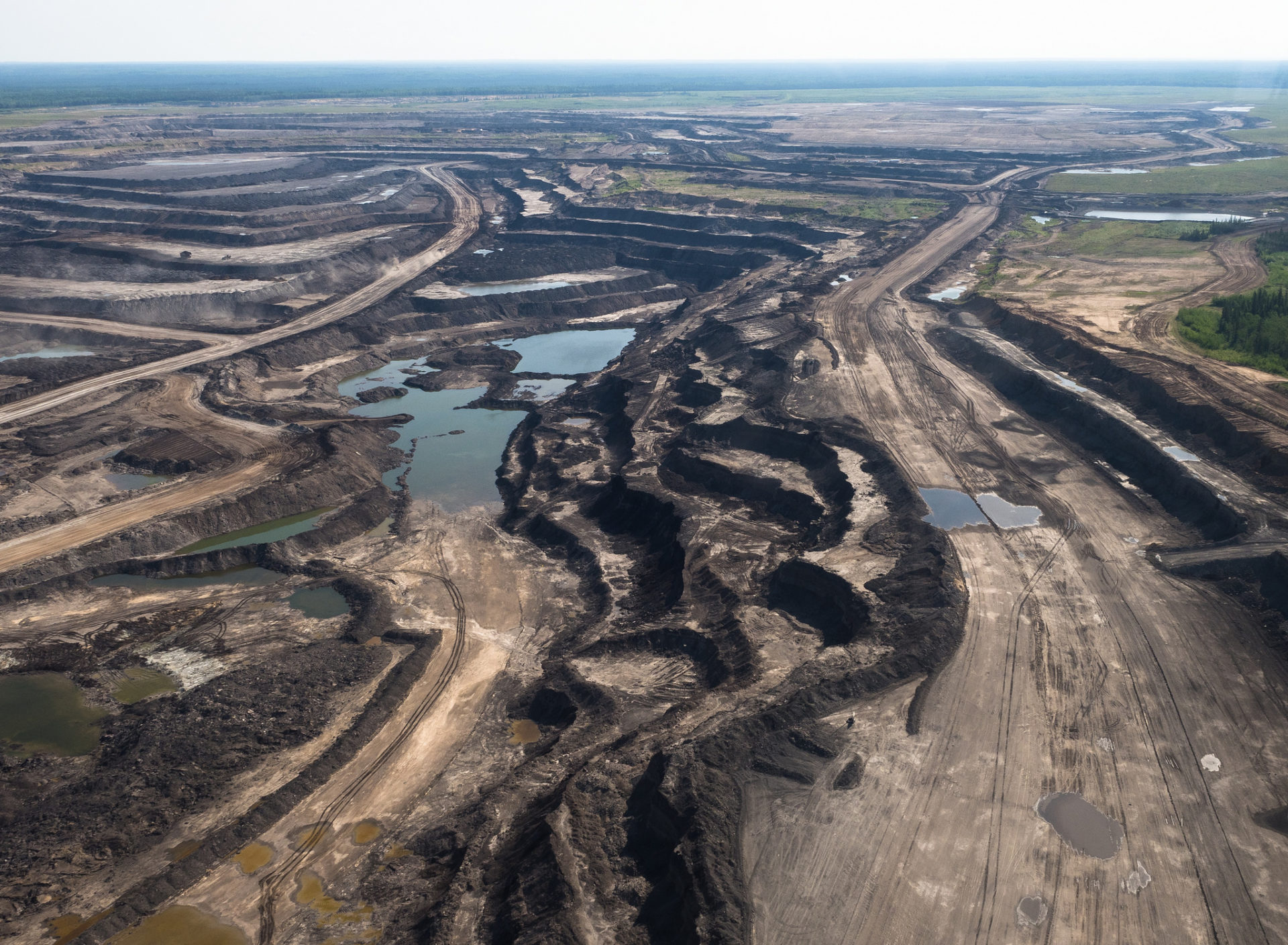
Open-pit mining in the Alberta oilsands requires digging up boreal forest in order to extract vast quantities of bitumen. The Frontier mine would have covered an area of 292 square kilometres roughly 110 kilometres north of the oilsand’s industrial heart near Fort McMurray. Photo: Louis Bockner / Sierra Club BC
But not all oil from the oilsands comes from the open-pit mines for which the industry is famous — it’s actually just under half of production.
Currently, more than half — 53 per cent — of oil produced from the oilsands is extracted through another method: in-situ technology, which is very different from open-pit mining. In-situ oil development involves drilling two horizontal wells deep below the surface. In steam-assisted gravity drainage (SAGD), the most common in-situ method used in the oilsands, steam is pumped into one well and oil is pumped out the other.
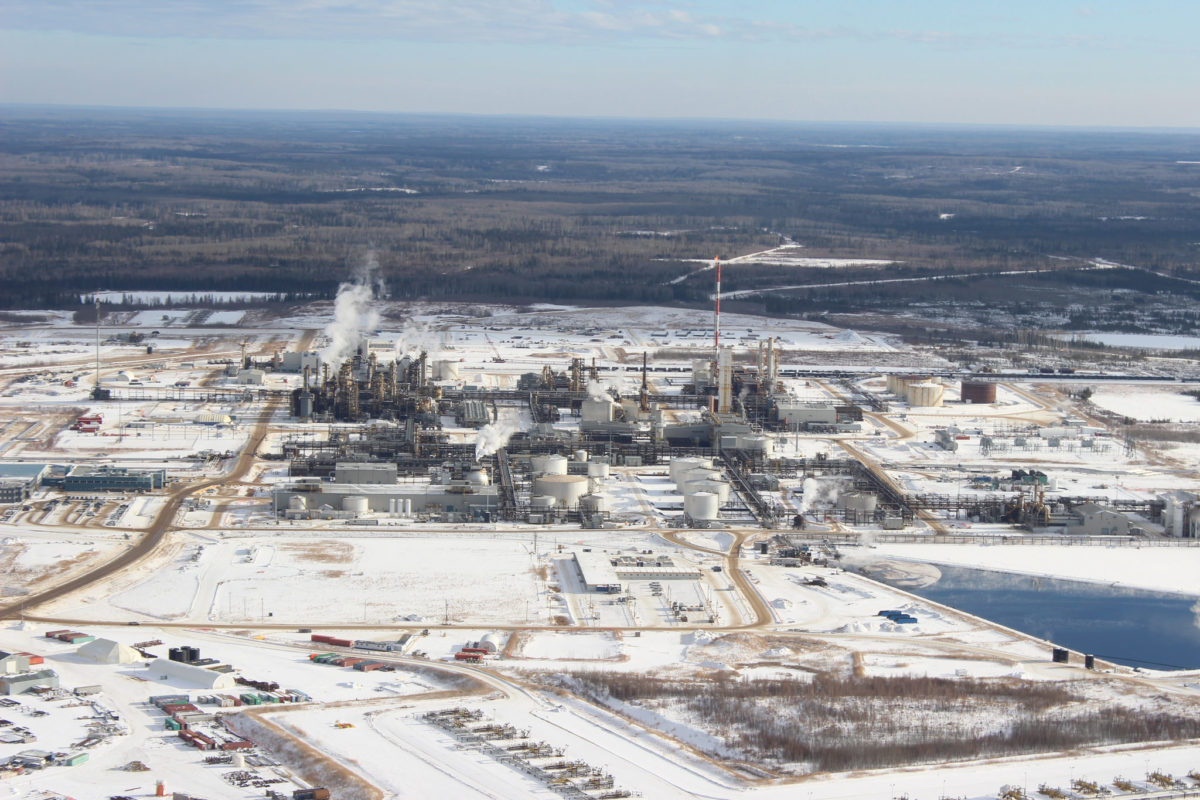
Bitumen from the Alberta oilsands is extracted using steam assisted gravity drainage or SAGD, an in-situ method, at Nexen’s Long Lake facility. Photo: Jason Woodhead / Flickr
In-situ production typically involves a lot less land disturbance (no strip mining), but is responsible for more carbon pollution per barrel produced.
Only 20 per cent of the oil reserves found in the oilsands can be accessed through open-pit mining. The other 80 per cent is too deep below the surface for open pit extraction so it is accessed through in-situ production.
There are already seven open-pit mining projects in the oilsands. Had it been approved, Teck’s Frontier oilsands mine would have been the eighth.
The Frontier mine was one of the largest, if not the largest, oilsands mines ever proposed in Alberta.
Open-pit mining requires the removal of what’s known in the industry as “overburden.” In northern Alberta, the overburden consists of boreal forest, wetlands, peatland and soil.
The Frontier project would have involved permanently stripping away 14,000 hectares of wetland, 3,000 hectares of peatland and 3,000 hectares of old-growth forest.
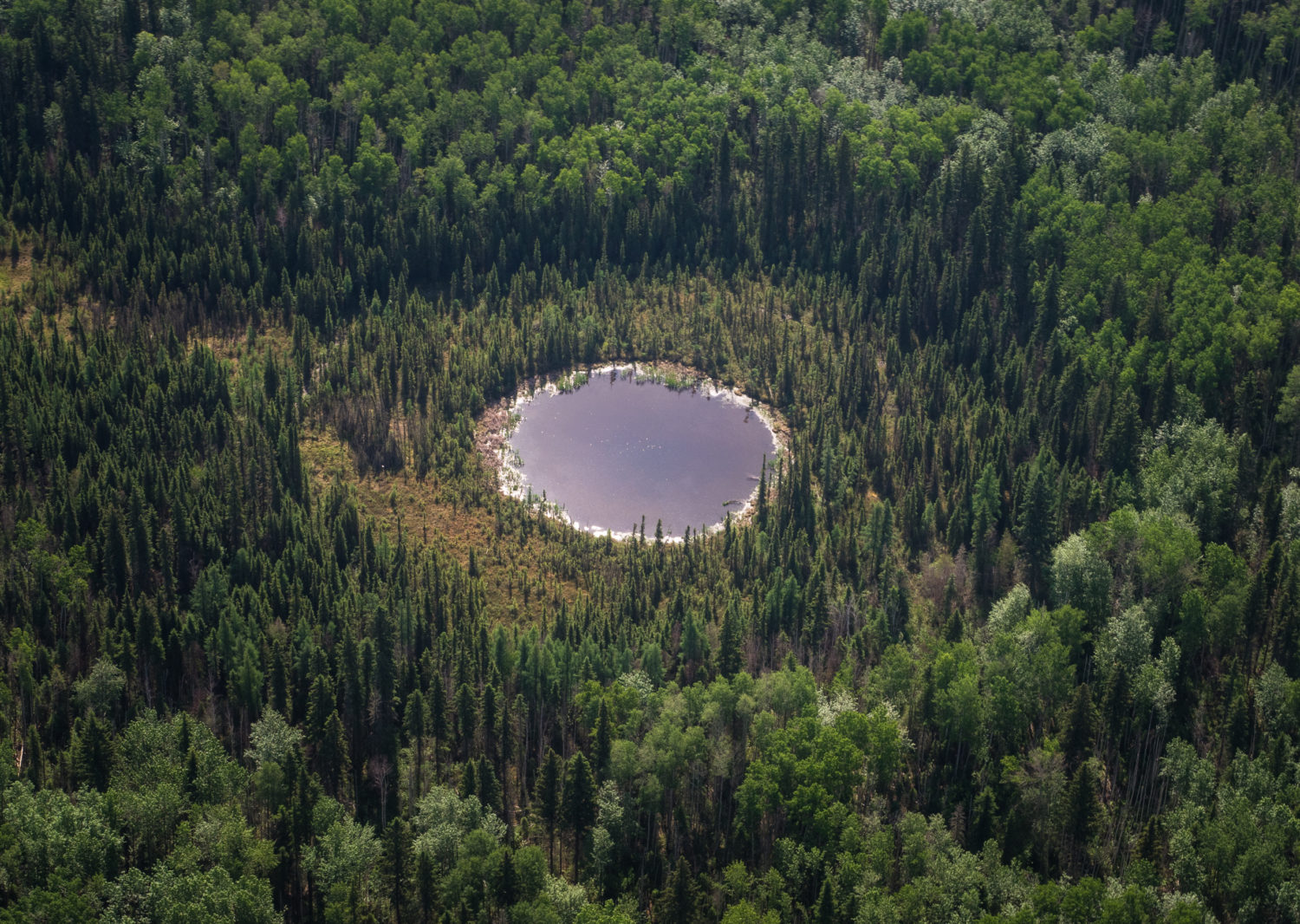
A small body of water at the proposed site of Teck Resources’ Frontier Mine, 30 kilometres south of Wood Buffalo National Park. It would have been one of the largest mines ever constructed in Alberta’s oilsands. Photo: Louis Bockner / Sierra Club BC
Since the oilsands started operations in the 1960s, an estimated 1.5 trillion litres of tailings — a mixture of waste water, clay, sand and petrochemical residues — have accumulated in containment ponds built near oilsands operations.
Tailings ponds, contained behind large dams, are designed to prevent industrial waste water considered highly toxic, including arsenic, benzene, lead and mercury, from contaminating the local environment.
Alberta’s tailings pond are enormous, spanning some 220 square kilometres, nearly a quarter the size of the city of Calgary or twice the size of Vancouver.
One single tailings pond, located at a Syncrude operation, is contained by the largest dam in the world, holding 540,000,000 cubic meters of material.
Tailings ponds in the oilsands are unlined and there have been documented cases of contamination leaking from these pits into the Athabasca River. NAFTA even conducted an investigation into the threat tailings ponds pose to the environment.
There are currently no known methods for cleaning up the tailings ponds, although industry has considered ‘capping’ the unlined pits with fresh water to create ‘end pit lakes,’ a proposal that has been heavily criticized.
The group Environmental Defence advocates against the creation of any new tailings ponds in the oilsands, “until industry successfully demonstrates that it is capable of properly reclaiming them.”
In the last 50 years, Alberta’s oilsands companies have only received reclamation certificates for about 0.1 per cent of the total land disturbed, according to the Pembina Institute. Industry reports it has put reclamation efforts into about seven per cent of land affected by tailings — but it has not yet received final regulatory certification to confirm that.
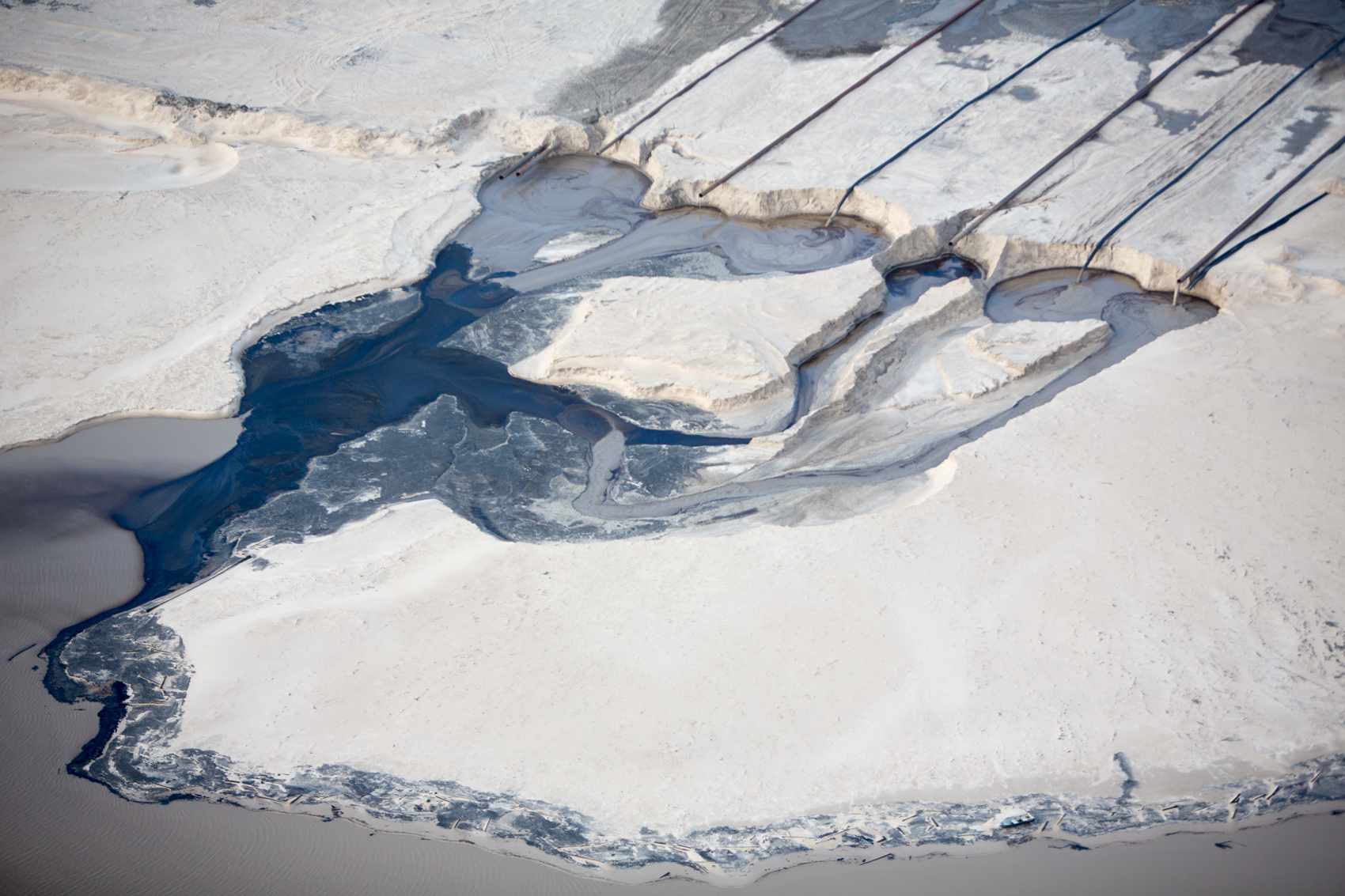
Alberta’s tailings pond are enormous, spanning some 220 square kilometres, nearly a quarter the size of the city of Calgary or twice the size of Vancouver. Photo: Alex MacLean
Crude oil produced in the oilsands is the most emissions-intensive oil in North America.
The Oil-Climate Index, which ranks various sources of crude oil on the continent, consistently places Canada’s Athabasca sweet synthetic crude oil at the top of its ranking of oil sources arranged by carbon emissions per barrel of oil produced.
According to the government of Alberta, the oilsands are currently responsible for 70 megatonnes of emissions annually.
To put that in the national context, in 2017, Canada’s total carbon pollution was just over 716 megatonnes, according to Environment and Climate Change Canada.
The Canadian Association of Petroleum Producers, the group representing the oil and gas industry, says on its website that oilsands developments “account for 10 per cent of Canada’s [greenhouse gas] emissions.”
The Canadian Energy Research Institute — funded in part by industry associations — estimates the oilsands will be responsible for 100 megatonnes of emissions by 2026, a substantial increase when the country has committed to a dramatic overall reduction.
But, increasingly, estimates of oilsands carbon pollution provided by the provincial government and industry are being called into question.
It depends on whom you ask.
There are concerns that the Alberta government and industry are underestimating the total carbon pollution coming from the oilsands.
Recent reports suggest that the federal government disputes Alberta’s estimates of emissions stemming from the oilsands, pegging the total at 87 megatonnes this year, nearly 30 per cent higher than Alberta government estimates.
A study published last April in the journal Nature, led by air-quality scientists with the federal government, also found the emissions associated with oilsands production were much higher than industry reported.
Using aircraft to collect on-site data, the researchers found significant “discrepancies” — to the tune of 30 per cent — between what they were measuring and what companies were reporting.
“The overall impact of the differences between measured and reported [greenhouse gas] emissions found here is large,” they wrote.
Canada has set ambitious targets to reduce nationwide carbon pollution — goals which will leave the oilsands behind if rapid changes aren’t made.
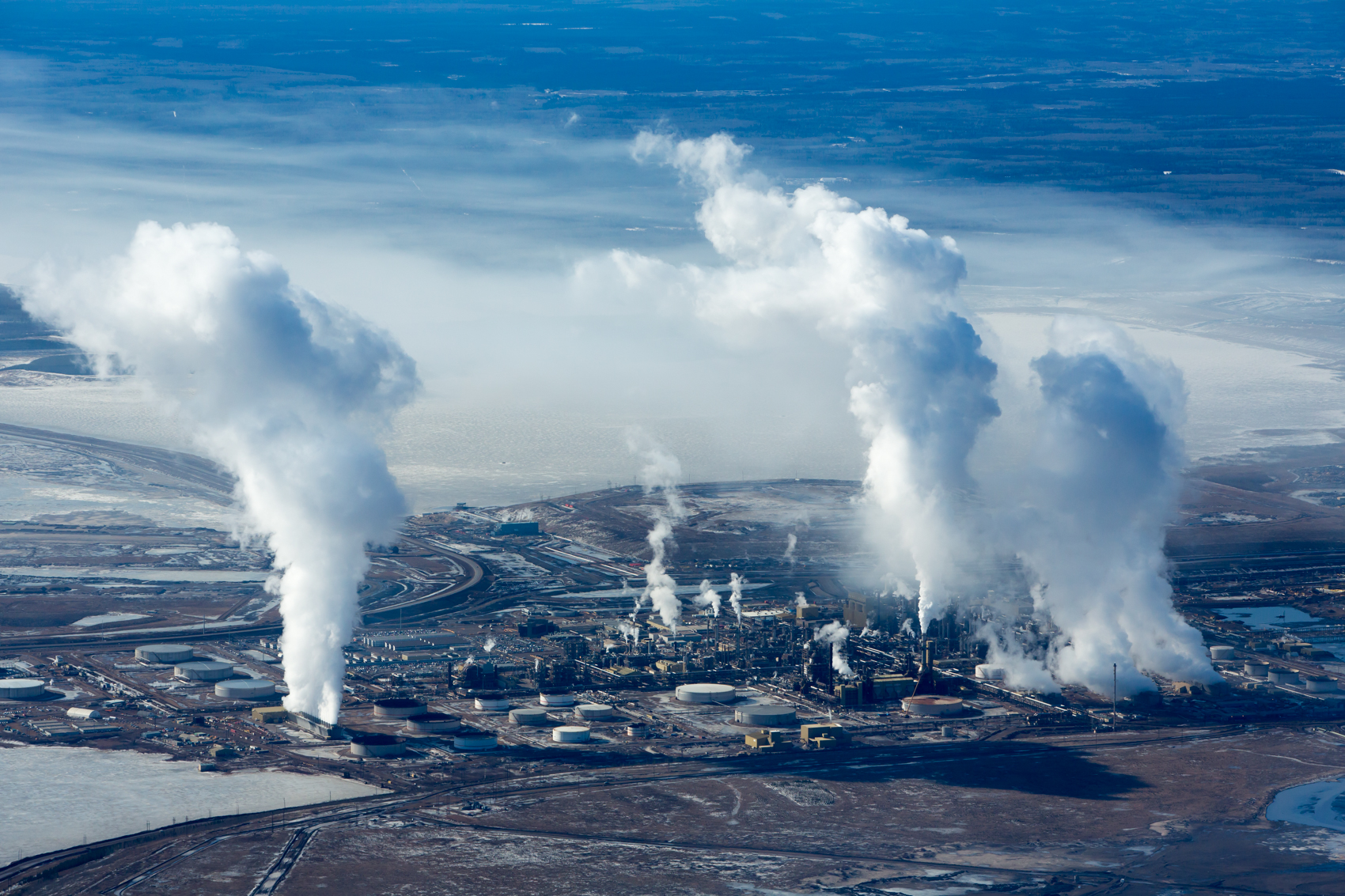
Syncrude’s Mildred Lake refinery in the oilsands. Photo: Alex MacLean
Canada’s climate commitments peg our mid-century greenhouse gas emissions target at 80 per cent below 2005 levels, which is the equivalent of a total national greenhouse gas emissions budget of 150 megatonnes by 2050.
This means the oilsands, if changes aren’t made, could account for more than one-half of the country’s entire carbon budget.
A December poll found 76 per cent of Canadians think the country needs to be “doing more” when it comes to climate change, while 64 per cent said “Canada should capitalize on the global need for fossil fuels.”
Climate change was reported to be the number one issue in the most recent federal election.
But climate action is tricky in Canada, where the provinces exercise jurisdiction over natural resource projects and their environmental impacts. Canada has requested Alberta impose provincial restrictions on oilsands emissions but the province has been slow to respond (see #8).
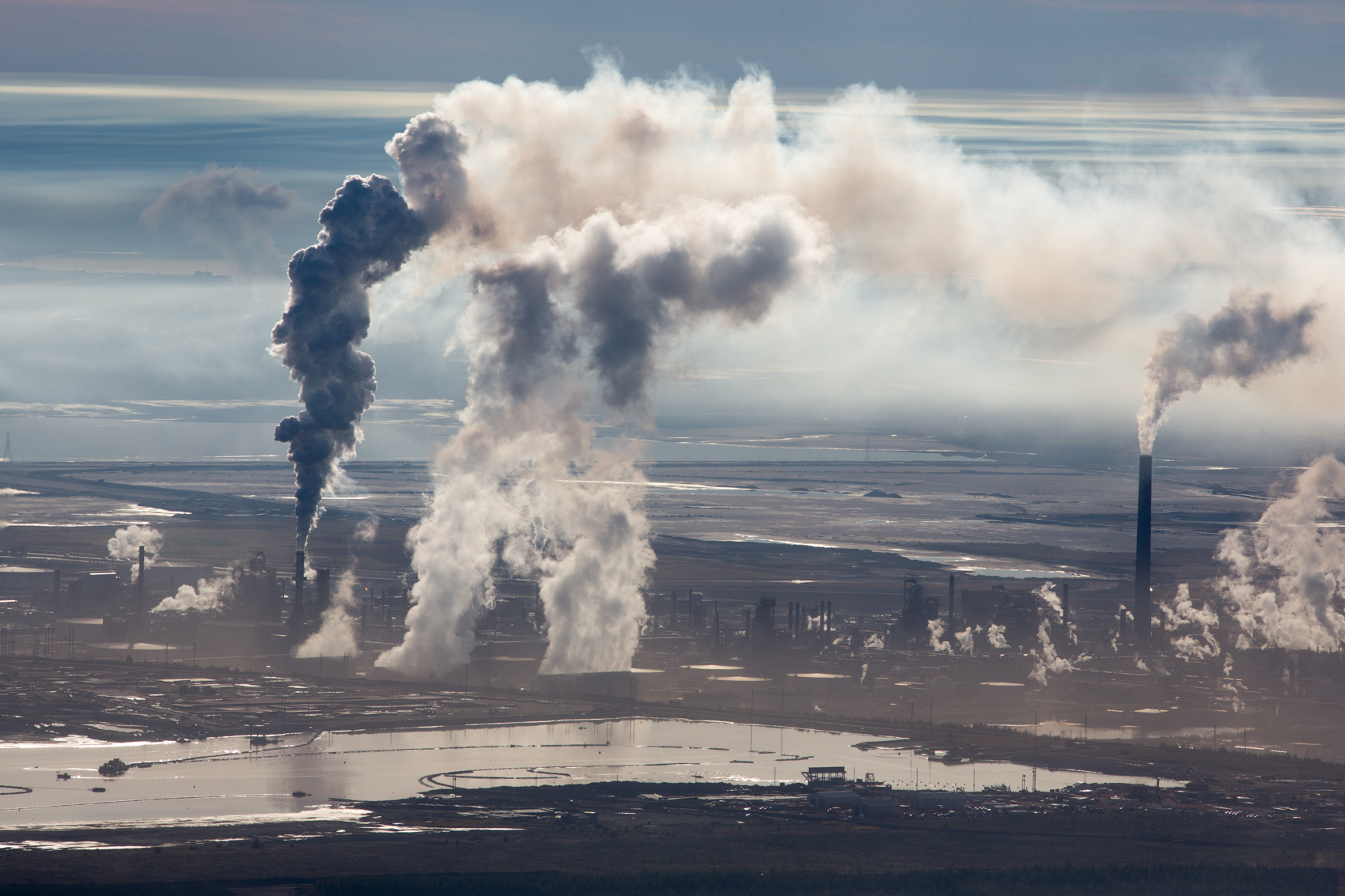
Syncrude’s upgrading facility at the company’s Mildred Lake oilsands site. Photo: Alex MacLean
Yes, but there’s a catch.
Alberta’s previous NDP government passed legislation in 2016 introducing a 100-megatonne cap on total emissions from the oilsands.
But no regulations were ever introduced to set that cap in motion. Kenney originally made it clear he intended to scrap the cap, but has since said he’s “prepared to be pragmatic.”
The government of Alberta’s website still says it will “seek the advice of the industry, regulators, environmental organizations and Indigenous and Metis communities on the implementation of the 100 megatonne limit,” although there are still no plans in place for regulations.
Wilkinson recently told CBC, “if you take all of the various projects that have already been approved in the oilsands and you assume all of them get built, you’re talking about 130 megatonnes.” He is pushing for regulations to be developed to ensure this doesn’t happen.
Latest oilsands mega mine proposal a reality check for Alberta’s emissions cap
As former Natural Resources Minister Amerjeet Sohi put it, “a cap without regulations is meaningless.”
Just last week, Wilkinson asked his provincial counterpart in Alberta to “follow through and fully implement its legislation to limit emissions to 100 million tonnes from the oilsands.”
But even if emissions from the oilsands were capped at 100 megatonnes, they would still take up two-thirds of Canada’s total emissions budget by 2050.
You’ve heard it once and you’ll hear it again. The oil and gas industry and its supporters (like the Alberta government) say the emissions intensity of oil produced in the oilsands is decreasing.
That was stated in an open letter signed by the CEOs of three major oil and gas companies last year. “We’ve reduced the emissions intensity in the oilsands by about 30 per cent over the past two decades,” they wrote, adding “a number of oilsands operations are producing oil with a smaller greenhouse gas impact than the global average.”
But the truth is more complicated.
As Macleans magazine put it in a 2019 article about emissions trends in the oilsands: “in the race to tell a better story, oilsands advocates — including the ones elected to political office — will reach for the best-sounding proclamations they can extract from the sludge of data.”
Yes, the oilsands have become more efficient at producing usable crude from the thick sludge that is mined at the oilsands — a process companies have been working on for half a century.
How the carbon pollution from a barrel of oilsands crude compares to crude oil from other parts of the world is a different question, which has been studied more extensively in recent years.
As a 2019 article published in the journal Science put it, “extraction and processing of heavy oils and oilsands with current technologies is very energy and carbon-intensive.” And, the authors noted, “the ability to reduce the intensities is challenging.”
The same paper found oil produced in Canada (remember that the majority of Canadian oil comes from the oilsands) was far more carbon intensive than the global average.
Canada’s oil ranked fourth in the world in terms of emissions intensity, trailing only behind Venezuela, Cameroon and Algeria.
Decisions by investors, from central banks to pensions to global investment funds, to pull out of oilsands projects have revolved around the relative intensity of emissions from oilsands crude.
Producing oil from Alberta’s oilsands is expensive, and some economists have their doubts about how long it will remain profitable.
“One thing that many people fail to realize is just how important the global price of oil is for the level of economic activity in Alberta’s oil and gas sector,” Jennifer Winter, assistant professor of economics at the University of Calgary, told The Narwhal last year.
As Jeff Rubin, former chief economist with CIBC World Markets, previously told The Narwhal, it all depends on world oil prices, which are by no means guaranteed.
“Look at the returns you’ve gotten from the oilsands over the last five to six years,” Rubin said. “And consider how viable that resource will be if, in fact, the world does mitigate climate change.”
He noted that global action on climate change in the long-term could further reduce world oil demand, pushing prices lower.
Alberta oil doesn’t do well when prices are low. It’s more expensive to produce than in other jurisdictions, like Saudi Arabia.
Rubin also told The Narwhal that oil in other jurisdictions like Saudi Arabia and Kuwait will be economically viable for much longer than Alberta’s high-cost oilsands. “That’s the kind of oil that’d be the most commercially sustainable, if in fact we’re going to mitigate climate change,” he said.
All of this leaves the economic future of Alberta’s oilsands up for debate.
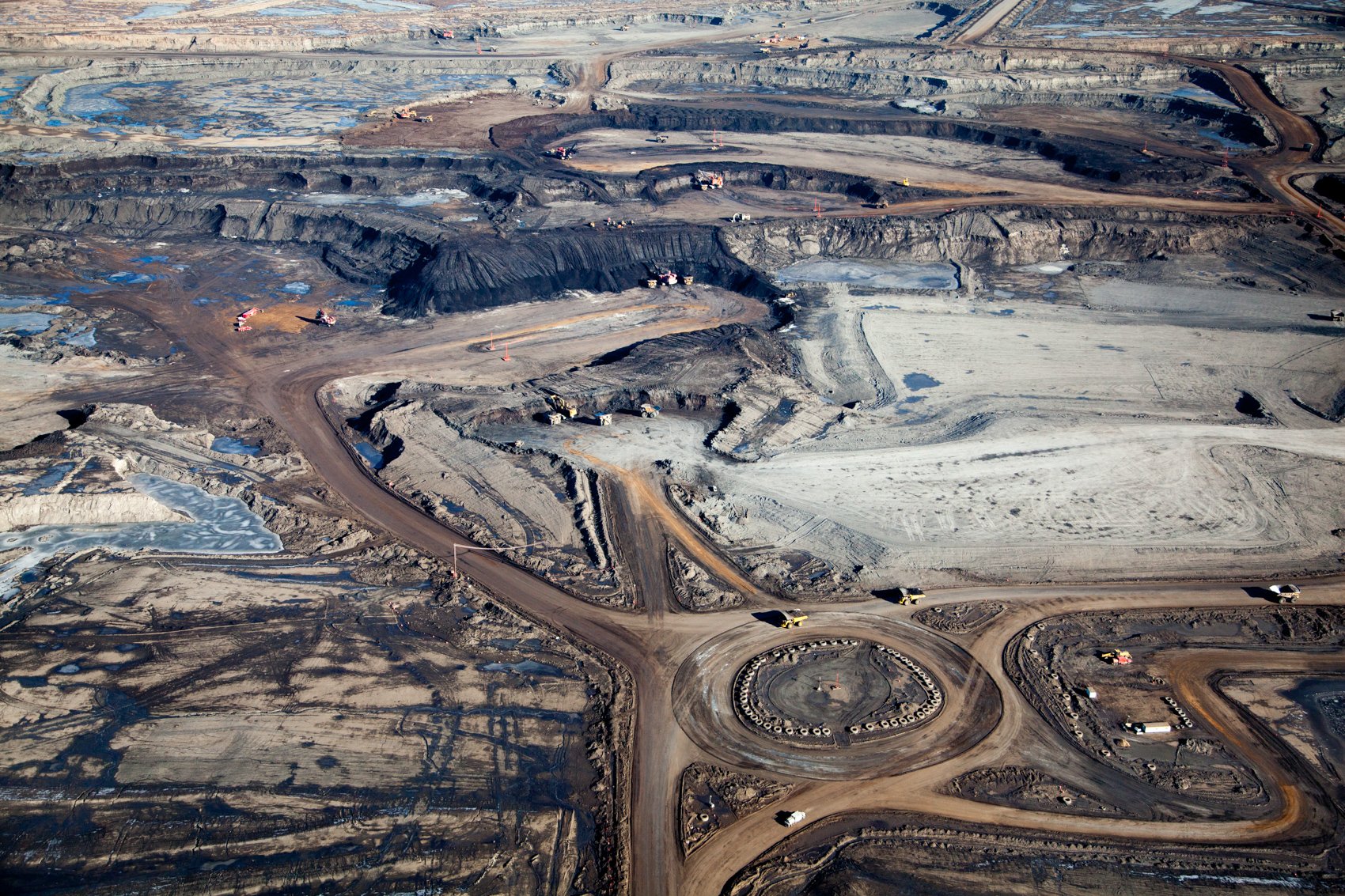
Heavy haulers in the oilsands mines carry loads of up 400 tons and cost approximately $5-6 million each. Hauler tires, with a lifespan of about on year, cost $50,000 each. Photo: Alex MacLean
Yep.
“The Canadian government … is totally responsible for the failure of the [oilsands project],” wrote a Globe and Mail reader in 1982. At that time, the country was up in arms about the recent cancellation of the Alsands oilsands mine, first proposed in December 1978 and approved in 1979. The company said economic concerns were responsible for the cancellation.
The reader went on: “Almost no one expected the government to kill the goose that laid the golden egg, but kill it they did. Now what? How much longer is the Canadian public going to put up with an interventionist government that has a growing adversary relationship with business?”
The Alsands project had promised thousands of jobs and billions in economic revenue.
Almost forty years later, it’s hard not to see some parallels between that ill-fated project and Teck’s proposal to build the massive Frontier oilsands mine in northern Alberta.
Like Frontier, Alsands was hailed as a cure to economic woes. Its success was seen as a litmus test for the future of huge oil projects. And it failed.
A 1983 article in the Globe and Mail blamed the project’s cancellation, at least in part, on “a deteriorating world oil market.”
Headlines about Alsands project ran in papers across the continent, including the New York Times, which wrote, “Alsands was one of several projects that Canada was counting on to revive its lagging economy.”
And sweeping statements about the future of the oilsands were common, too. The 1982 headline in the Edmonton Journal asked if this meant the “end of megaprojects.”
Here we are again — but this time the project cancellation comes in the midst of a much larger and potentially game-changing debate about how the oilsands fit into Canada’s plans to combat the growing climate crisis.
Enbridge Gas will face Waterloo Region in a hearing before the Ontario Energy Board to renew an agreement that would allow the company to continue...
Continue reading
When maps showing areas most likely to flood are outdated, it puts people and property...

We’re suing the RCMP for arresting a journalist on assignment for The Narwhal. It’s an...

As glaciers in Western Canada retreat at an alarming rate, guides on the frontlines are...